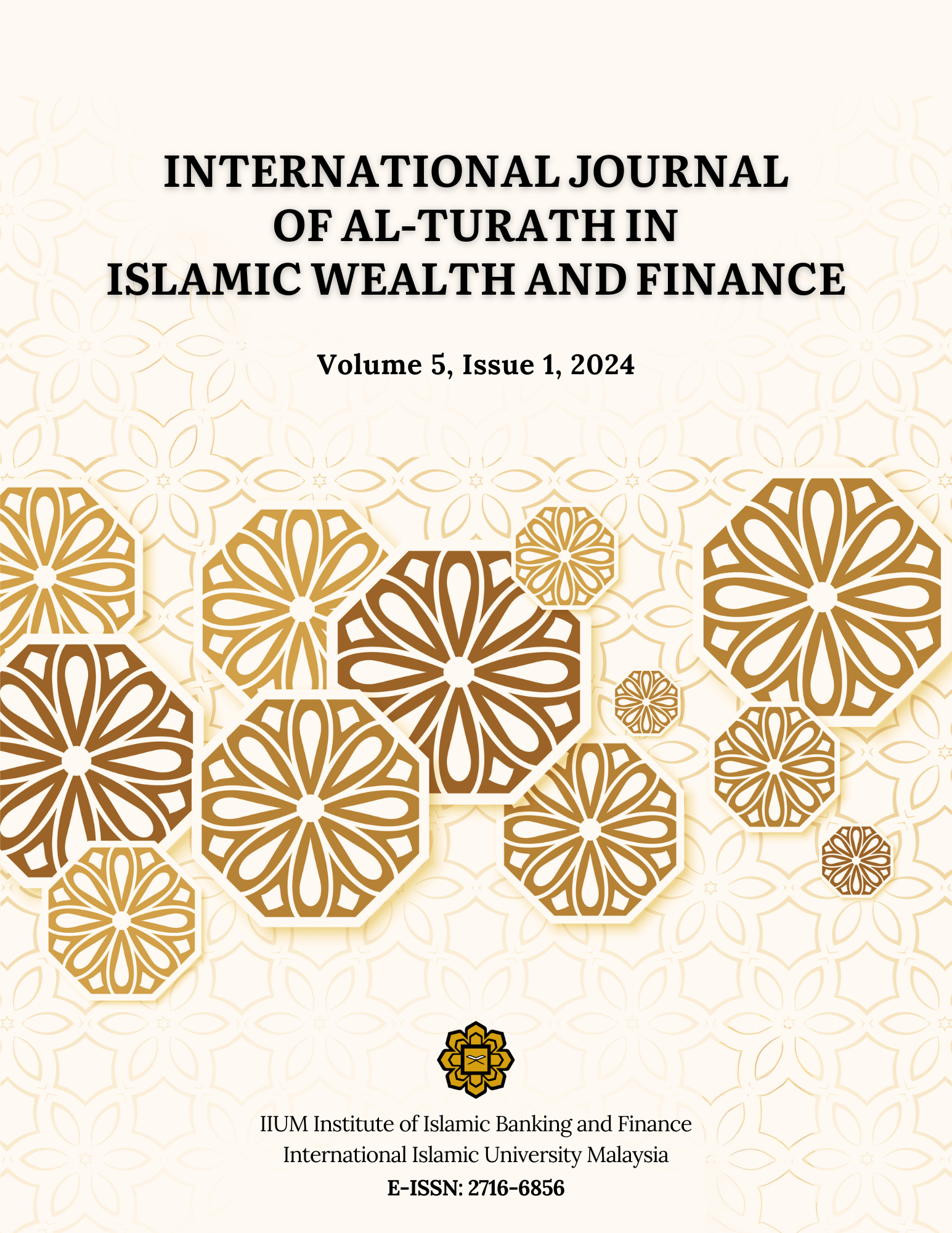قياس النية السلوكية نحو استخدام التمويل الإسلامي الأصغر للمشاريع الصغيرة والمتوسطة في طاجيكستان
Measuring the Behavioral Intention towards Adopting Islamic Microfinance for SMEs in Tajikistan
DOI:
https://doi.org/10.31436/ijaiwf.v5i1.906Keywords:
التمويل الإسلاميي, المشاريع الصغرى, طاجيكستان, Islamic Finance, Microfinance, TajikistanAbstract
الملخص
طاجيكستان، دولة أغلبيتها مسلمة في آسيا الوسطى، تبدأ مسيرتها نحو التمويل الإسلامي الأصغر في ظل التحديات التي تواجه مؤسسات التمويل الأصغر الراهنة، والآثار المترتبة على الأزمة المالية. يهدف هذا البحث إلى استكشاف إمكانية تطبيق نظام التمويل الإسلامي الأصغر في طاجيكستان، معتمدًا على النهج الكمي في تحليل استخدام خدمات مؤسسات التمويل الإسلامي الأصغر. يتم تحليل العلاقة بين المتغير الثابت (مثل موقف النجاح، المعايير الشخصية، سيطرة السلوك) والمتغير التابع من خلال استبيانات جمعت في مدينتي دوشانبي وخوجاند. يسلط البحث الضوء على أهمية الدراسة التجريبية لفهم تحديات التمويل الإسلامي الأصغر، بما في ذلك الوعي، المعايير الاجتماعية، معرفة المنتج، ومستوى الثقة. أظهرت نتائج تحليل الانحدار أن حوالي 44.2٪ من التغير في المتغير المعتمد يمكن تفسيره بواسطة المتغيرات المستقلة، مشيرةً إلى وجود علاقة إحصائية معنوية بينهما. تقييم الفرق (F Change) يدعم هذا الاستنتاج، مما يبرز أهمية العلاقة بين المتغيرات. يوصي البحث بإجراء دراسات مستقبلية تستخدم طرقًا إحصائية إضافية لفهم العوامل التي تؤثر على هذه العلاقة، وتضمين متغيرات جديدة في النموذج الإحصائي لزيادة قوة التنبؤ. كما يشدد على أهمية دراسة السياقات الخاصة وتوجيه توصيات عملية بناءً على النتائج، ومراعاة الزمن في الدراسات المستقبلية ومشاركة النتائج مع الجمهور المهتم والمختصين. هذه التوصيات مهمة لتعزيز الفهم العام للعلاقة بين المتغيرات وتوجيه السياسات واتخاذ القرارات بشكل أكثر فعالية.
Abstract
Tajikistan, a predominantly Muslim country in Central Asia, begins its journey towards Islamic microfinance amidst the challenges faced by current microfinance institutions and the lingering effects of the financial crisis. This research aims to explore the possibility of implementing an Islamic microfinance system in Tajikistan, relying on a quantitative approach to analyze the use of services of Islamic microfinance institutions. The relationship between the constant variable (such as success attitude, personal standards, and behavior control) and the dependent variable is analyzed through surveys conducted in the cities of Dushanbe and Khujand. The research highlights the importance of empirical studies in understanding the challenges of Islamic microfinance, including awareness, social norms, product knowledge, and trust level. Regression analysis results show that about 44.2% of the variation in the dependent variable can be explained by the independent variables, indicating a statistically significant relationship between them. The evaluation of the difference (F Change) supports this conclusion, highlighting the importance of the relationship between the variables. The research recommends conducting future studies using additional statistical methods to understand the factors affecting this relationship and including new variables in the statistical model to enhance predictive power. It also emphasizes the importance of studying specific contexts and providing practical recommendations based on the results, considering time in future studies, and sharing findings with the interested public and professionals. These recommendations are crucial for enhancing the general understanding of the relationship between variables and guiding policies and decision-making more effectively.


